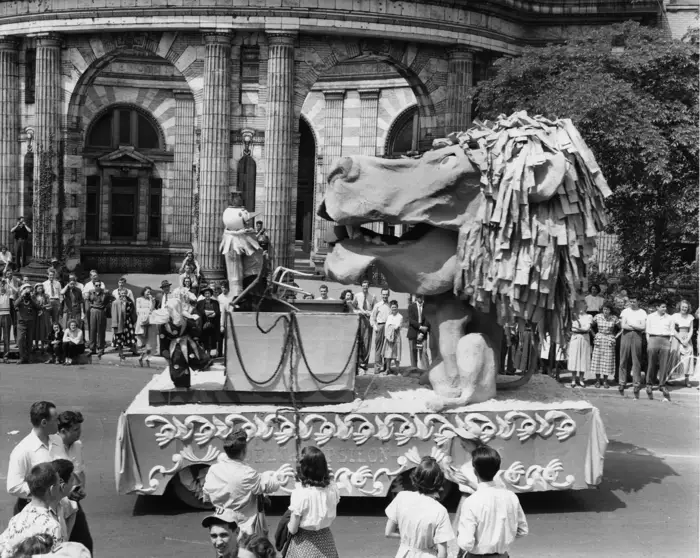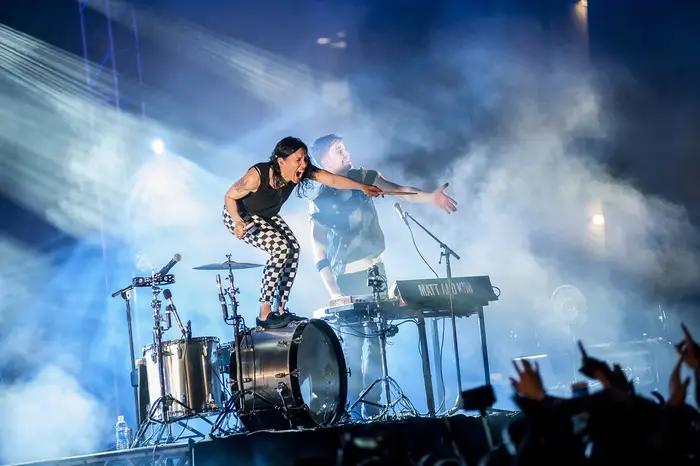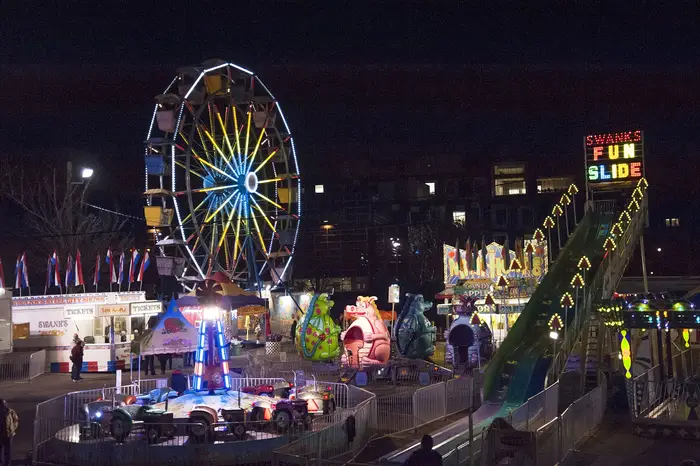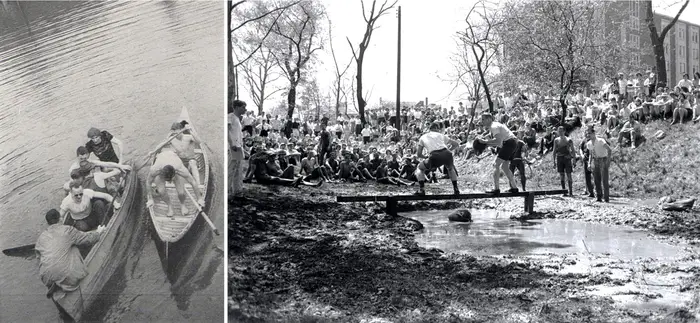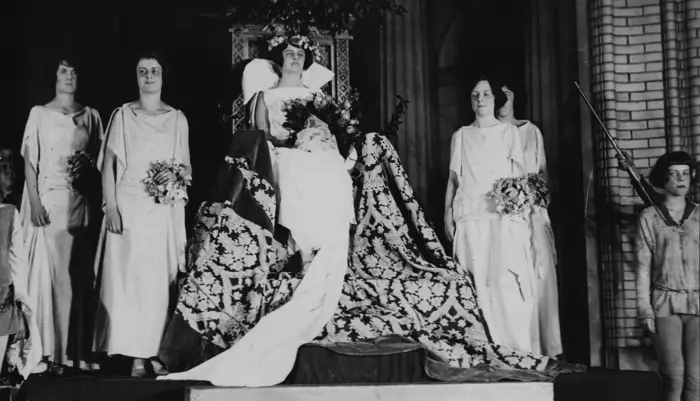
Popular Spring Carnival Events Evolve Over Time
Media Inquiries
Spring Carnival(opens in new window). Ah, that time of year when Carnegie Mellon University's campus thaws and students celebrate warmer weather. Times have changed, and events have evolved, but the spirit of celebration remains.
While a variety of spring festivities started taking place on campus as early as 1914, Carnival as it is known today started around 1920 when Sweepstakes, or Buggy racing(opens in new window), also began, said University Archivist Julia Corrin. It was a time when life was returning to normal after World War I and the 1918 flu pandemic.
"Everyone was coming back from World War I, and there was a feeling that people wanted to celebrate and have a big party," she said. "It took Carnival to a level it had not been previously. "There was a circus, plays and stuff going on all weekend along with an explicit intent to have alumni return and reconnect to the school over the weekend."
University Libraries is expanding its digital collection of photos and documents related to CMU's history, including that of Carnival. Visit the website(opens in new window)
Design Challenge: From Parade Floats to Booths
Competitive booth building started out as a more mobile activity: floats. In the 1930s, fraternity houses were judged on their float designs. While noncompetitive booths were a part of carnival and the Midway, it wasn't until 1955 that booth designing was judged in place of floats.
The colorful structures are an iconic sight at Spring Carnival. They follow themes. Past themes have included "History with a Twist," "As Seen on TV" and "Planet Earth." This year's theme is "Ad Astra." The buildings are inspected for safety and are judged in four categories: fraternity, sorority, independent and blitz (smaller booths). Since 1949 the service organization Alpha Phi Omega has built the concession stand and gives the proceeds to charity.
Watch the life cycle of booths from build to breakdown.
Sweepstakes, aka "Buggy"
The starting line from the inaugural race in June 1920 was outside what is now known as the College of Fine Arts building. Racers then traveled toward Margaret Morrison Carnegie Hall, went up Tech Street, down through Schenley Park and then turned back to campus. Buggies would then take pit stops and have their rear wheels swapped before heading back toward the starting line.
The vehicles that race in Sweepstakes have changed with the times and technology. At the beginning, races were run with little more than rain barrels and crates on wheels. After many rule changes, today it takes five pushers and a driver to circumnavigate the course in a little more than 2 minutes — and an entire year to prepare for the race. For some alumni, racing is a family affair, and in recent years, some buggies are driving themselves.
Melinda Hungerman Johnson, who graduated in 2000 with a bachelor's degree in humanities and arts(opens in new window), is now the senior director of development in the College of Fine Arts(opens in new window). Through Kappa Alpha Theta, she pushed a Buggy and painted her sorority's booth entries.
"Carnival was one of the main reasons I got involved in a sorority," Johnson said. "Spring Carnival is such a touchstone experience, and nearly everyone has a Carnival moment they remember."
Indie electronic duo Matt and Kim performed at Carnival in 2015.
Concerts
Concerts and dances have been part of Spring Carnival since at least the 1940s. The school has drawn big names of their times. Glenn Miller and his Orchestra were the "band sensation of the nation" in 1940 and provided music for the Spring Formal Dance that year as part of the festivities. Band leader and trombonist Tommy Dorsey also swung through campus. In the 1970s, the Activities Board was established and began focusing more on concerts over dances. Some big names have performed: Carlos Santana, B.B. King and Pittsburgh-based Rusted Root.
Funny folks
Comedians also have taken the Spring Carnival stage including Nick Offerman, Zack Galifianakis, Tig Notaro,�Kumail Nanjiani, Thomas Middleditch and Hannibal Buress. Hasan Minhaj visited virtually last year.
The 2014 Midway was one of the final ones on the Morewood Parking Lot before rides were moved back to the CFA Lawn in 2016 to accomodate construction of the new Tepper Building.
Midway
The Midway has changed locations a few times over the years. Starting out at the CFA Lawn, it moved to the Morewood Parking Lot before its returning to the CFA lawn. The first Ferris wheel was added to the Midway in 1942. But with WWII happening, festivities were canceled for the next three years after that.
As a first-year student, Cristina Ba�uelos worked on a carnival committee managing vendors who brought face painting, balloon art and other skills to the Midway. Bañuelos, who graduated with a bachelor's degree in neuroscience(opens in new window) in 2019, is now a researcher in Tim Verstynen's Cognitive Axon Lab(opens in new window). She said Carnival was one of her favorite experiences as an undergraduate.
"I just loved the opportunity to have that time with my classmates and friends. CMU is so encouraging about Carnival, and they allowed us to really enjoy and appreciate it," she said. "There's something for everyone to look forward to Carnival. That's what makes it so special."
MoBot Races celebrated 25 years at Carnival 2019. Take a look back at the very first race, and some of the fun from the two-and-a-half decades since.
MoBot
The autonomous vehicle race known as MoBot ("MObile roBOTs") is open to anyone on campus including alumni. Results going back to the first race in 1995 are archived on the MoBot website. Competitors often work as teams to show off expertise in mechanical engineering, software development and design. The challenge is to create small machines to navigate a slalom-style course�designated with white lines down the Mall in front of Doherty and Wean Halls regardless of the weather.
"The lighting outside is really tricky. You can have brightness, shadows and sometimes clouds, all of which cause different conditions for the robots to work in," said Sebastian Scherer, an associate research professor in robotics, A triple graduate of CMU, he earned bachelor's degree in 2004, master's degree in 2007 and Ph.D. in 2011. As an undergraduate he won the student category twice.
"It was a lot of fun. I learned a lot with MoBot. It was really good to get into it, and you get to meet other people" he added.
Over the years, racers have met with sunny days, stormy rains and icy sleet. While sidewalks have been replaced, technology has advanced and the thrill of finding new solutions to navigate obstacles is part of why MoBot endures.
Bygone Traditions
At left, Panther Hollow Lake, a part of Schenley Park near campus, was the site for Canoe Tilting competitions where teams of two people standing in a canoe would attempt to swamp another team's canoe either through fencing with oars, wrestling or shaking the boat. The contest stopped annually occurring in the 1930s. Canoe Tilting later morphed into plank jousting (at right) where male students competed using pillows to fight on wooden plants over mud pits.
Several decades also included crowning a campus Queen. One of the earliest was crowned in 1921. In addition to the royal court, female students participated in relay races�where rollerskaters carried spoons on eggs around a track. If an egg dropped, the lap would be repeated.
In the 1970s, gazorching was a contest where fraternities launched water balloons at each other.
